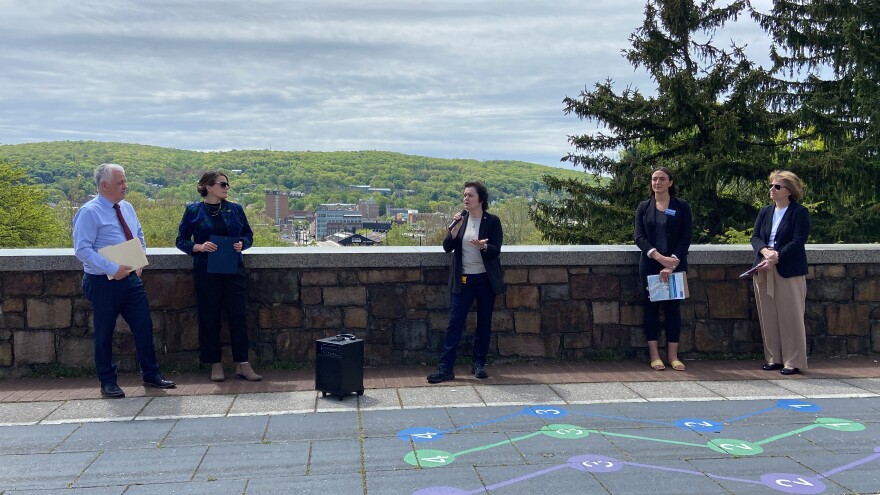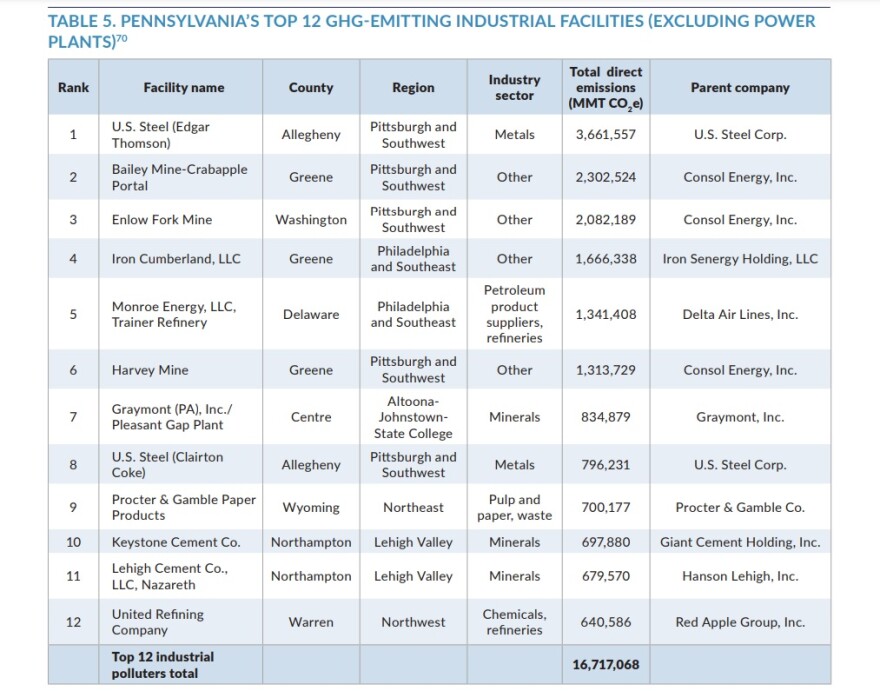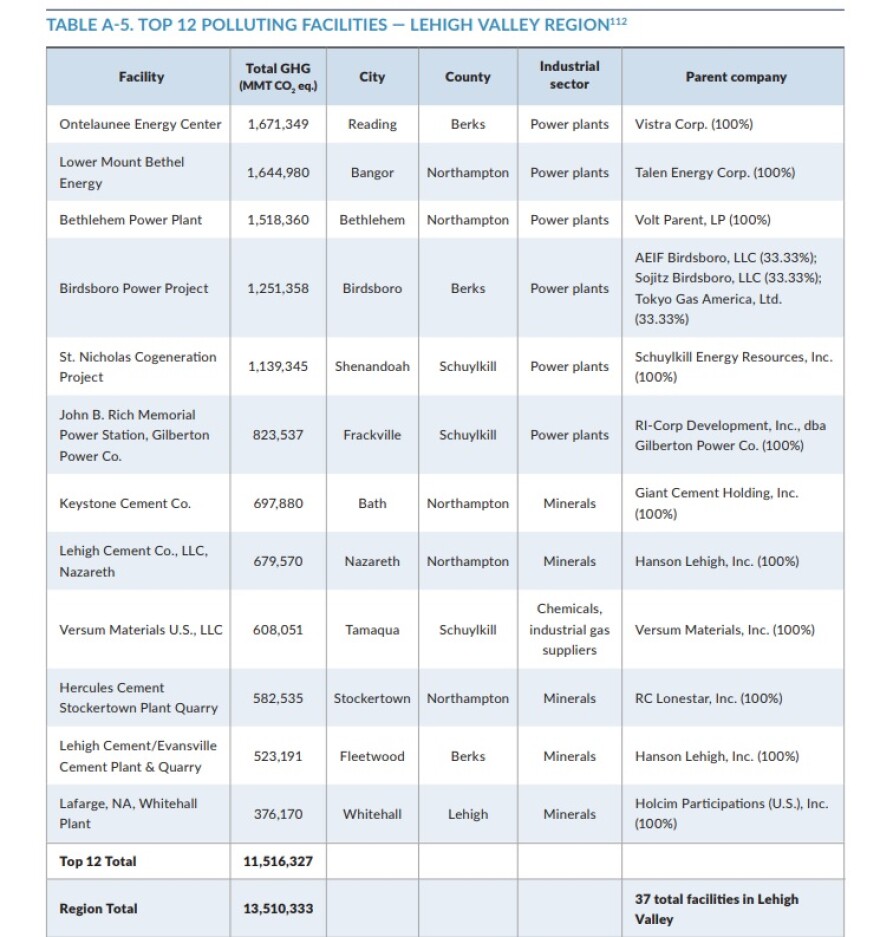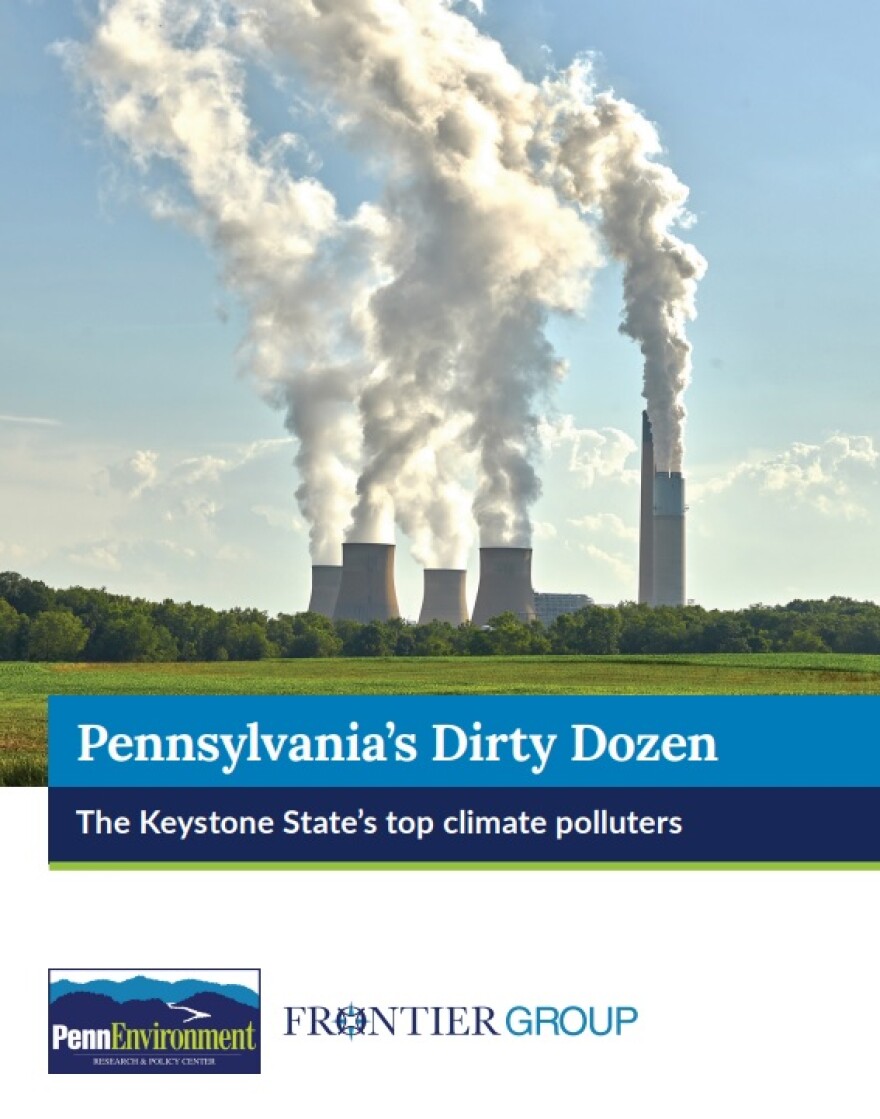BETHLEHEM, Pa. — Two Northampton County industrial facilities have been included on a ranking of Pennsylvania’s top climate polluters.
- PennEnvironment's "Dirty Dozen" ranking of polluters was released Tuesday
- Two Northampton County industrial facilities were included
- The Lehigh Valley makes up 12% of the state’s total emissions
Keystone Cement Co. in Bath and Lehigh Cement Co. in Nazareth placed 10th and 11th on PennEnvironment Research & Policy Center's “Dirty Dozen,” a ranking of the commonwealth’s top climate polluters. The companies emitted 697,880 and 679,570 million metric tons of carbon dioxide equivalents, respectively, into the atmosphere.
"As most of us know, climate change is the most urgent environmental challenge of our time," said Flora Cardoni, a field director with PennEnvironment. "Pennsylvanians, residents of the Lehigh Valley are already experiencing the impacts of climate change from hotter summers, more extreme weather, droughts, floods, destructive storms and we know those impacts will only get worse."
"Unfortunately, Pennsylvania is a huge part of the problem when it comes to climate pollution."

Released Tuesday, the report includes a regional breakdown, each with its own “Dirty Dozen,” as well as statewide greenhouse gas emissions ranking for each region, all compiled using EPA emission reporting data. Cardoni, state legislators and environmental activists held a news conference near City Hall to highlight the release of the rankings, as well as provide recommendations for reducing greenhouse gas emissions statewide to lessen the effects of climate change.
Both Keystone and Lehigh are owned by Texas-based companies, Giant Cement Holding Inc. and Lehigh Hanson, now Heidelberg Materials, respectively.
Officials at Lehigh Cement did not return a request for comment.
Stephen P. Holt, vice president of environmental, health and safety for Keystone Cement, said PennEnvironment's report "is a complete and total mischaracterization," citing the EPA's inconsistent standards for emissions reporting.
The agency does not include many industries in its reporting, including transportation, which is a large contributor to emissions statewide, he argued. And, if all of the country's contributors of emissions were considered, cement as a sector would only make up about .86% of the total.
"Keystone has reduced its carbon footprint to 25% below 1990 levels and has recently converted its plant to natural gas and it utilizes alternative fuels which avoids the landfilling of waste and conserves our natural resources," Holt said in an email. "Keystone has established 2030 goals and through its membership with [Portland Cement Association] believes our industry can achieve carbon neutrality by 2050. We are also tracking the progress being made by the National Carbon Capture Center on GHG control technologies."
The Portland Cement Association is a market intelligence organization for cement manufacturers, dealing with policy, research and education, according to its website.
I’m at a @PennEnvironment presser in Bethlehem today. The organization released a new report that ranks the “Dirty Dozen” facilities spewing the most global warming pollution in the Greater #LehighValley and across Pennsylvania. pic.twitter.com/pAIWTeEQKu
— Molly Bilinski, artisanal sentence crafter (@MollyBilinski) May 9, 2023
'The Lehigh Valley has some major offenders'
Chrysan Cronin, director and associate professor of public health at Muhlenberg College, said the report's findings were "disheartening."
"The data from the report show that the Lehigh Valley has some major offenders contributing, not only to significant and irreversible climate change, but also to the human health effects of the changing climate," Cronin said. "And so we're well past the point of speaking about the health effects of climate change as phenomena that will happen in the future.
"We are experiencing these health effects, both locally and globally, right now this minute."

Vulnerable populations, like children or the elderly, those with existing medical conditions, those with disabilities and low income residents, are impacted the most.
"An increase in air pollutants from wildfire, smog, pollen and mold exacerbate asthma and allergies and cause cancer, cardiovascular disease and pulmonary diseases," she said. "An increase in extreme weather events such as frequent heavy rain and flooding, droughts and major storms, such as hurricanes and tornadoes, can lead to injury, illness and death, as well as temporary or permanent displacement from housing."
Anita Forrester, an associate professor of geography at Northampton Community College and leader of Climate Reality Project Lehigh Valley, said the last time the Earth had such high concentrations of carbon dioxide in the atmosphere was about 4 million years ago, and temperatures were 3 degrees warmer then they are now.

"That is not something that we want in our environment," Forrester said. "You want an environment that is clean, that is safe, that is sustainable. And we owe that to our population, not just for the Lehigh Valley, for the entire planet.
"... We owe it to our community to create a safe, clean environment. We can't just sit back and wait. We need to adapt; we need to mitigate."

The Lehigh Valley’s ‘Dirty Dozen’
The Lehigh Valley, which in the report includes Berks, Carbon, Lehigh, Monroe, Northampton and Schuylkill counties, ranked third of the state’s eight regions for most greenhouse gas emissions, making up 12% of the state’s total emissions, according to the report.
As well as Keystone and Lehigh, the Valley’s “Dirty Dozen” include: Ontelaunee Energy Center, Reading; Lower Mount Bethel Energy, Bangor; Bethlehem Power Plant; Birdsboro Power Project; St. Nicholas Cogeneration Project in Shenandoah; John B. Rich Memorial Power Station, Gilberton Power Co. in Frackville; Versum Materials U.S. in Tamaqua; Hercules Cement Stockertown Plant Quarry; Lehigh Cement/Evansville Cement Plant & Quarry in Fleetwood; and Lafarge, NA, Whitehall Plant.

“Ontelaunee Energy Center is a 728-MW gas fired power plant that reported producing 1.7 MMT of CO2-equivalent GHG emissions in 2021,” according to the report. “While this facility didn’t make the state’s Dirty Dozen list, it was still responsible for producing GHG emissions equivalent to 4 billion miles of driving by the average gasoline-powered passenger vehicle.”
Reducing the state’s greenhouse gas emissions can slow the effects of global warming, researchers argue.
“From the scorching summer 2022 heat wave that led Philadelphia to post its second-hottest summer ever recorded, to the devastating flooding that followed 2021’s Hurricane Ida, climate change is making its presence felt in Pennsylvania," according to the report.
From the scorching summer 2022 heat wave that led Philadelphia to post its second-hottest summer ever recorded, to the devastating flooding that followed 2021’s Hurricane Ida, climate change is making its presence felt in Pennsylvania.PennEnvironment Research & Policy Center
In addition to PennEnvironment, the report was created by Frontier Group and To the Point Collaborative. The report’s authors argue state officials need “to pursue a long-term and large-scale transition away from the use of fossil fuels, and toward sources that emit low or zero GHGs.”
Steps the state can take to reduce emissions include: accelerating the transition to renewable energy; transitioning homes, businesses, transportation and industry away from fossil fuels; continuing the commitment to, and participation in, the Regional Greenhouse Gas Initiative; strengthening enforcement of clean air laws; and supporting environmentally responsible decarbonization of industry, according to the report.


